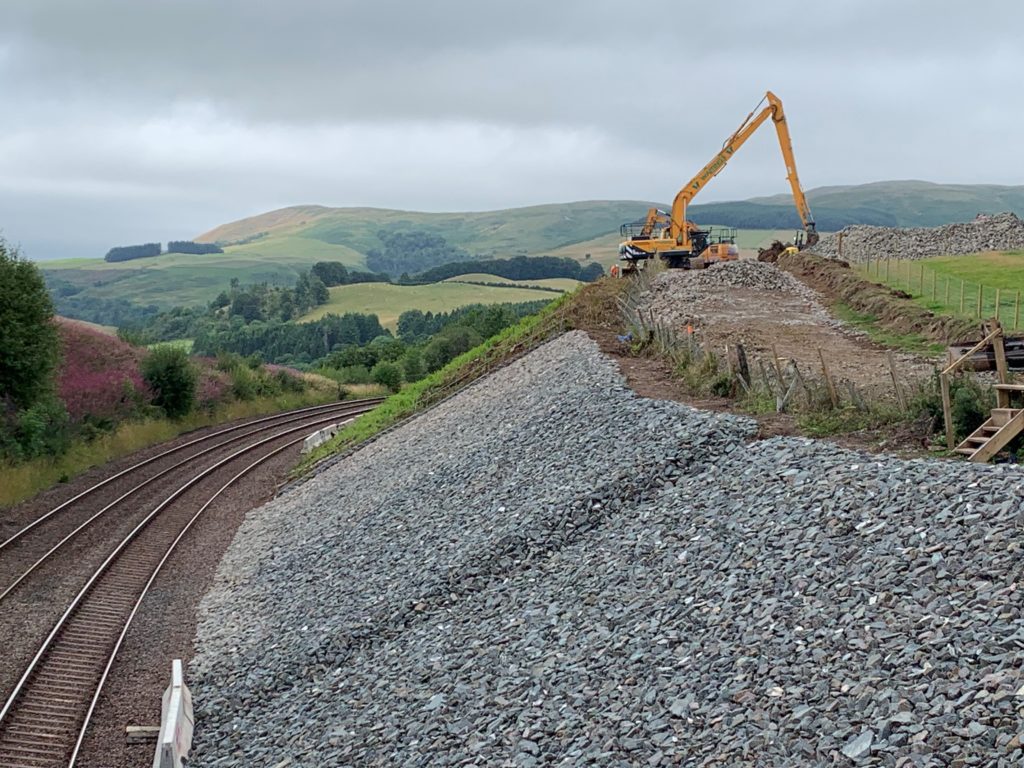
WORK is progressing on an £8 million project to reduce the risk of flooding and landslips on the rail line between Sanquhar and Dumfries.
The works, by Network Rail and contractor QTS, will see the installation of an ‘extensive’ crest drainage at the top of the railway embankments to channel water flowing from hillsides into newly upgraded drains, which will carry it away from the track.
In addition to the crest drainage, track-side drainage is also being upgraded with capacity increased to reflect the larger volume of rain which is falling and to minimise the risk this poses to the railway infrastructure.
At points along the track, loose stone and vegetation is being removed and rock netting installed. Network Rail said that the soil slopes above rock cuttings are also being regraded to reduce the possibility of landslips where the mud and debris would end up blocking the track.
The project has already utilised 7,000 tonnes of stone to regrade railway embankments which are more than 14 metres high in some sections. Around 750m of track-side drainage has also been renewed and more than 500m of concrete-lined crest drainage channels have been created ‘significantly’ boosting capacity and improving management of water.
In addition to addressing increasingly frequent extreme weather events, Network Rail said that the project seeks ways to deliver the required work in a way which minimises its carbon footprint and increases its environmental sustainability – with rock being sourced from local quarries, and a concrete impregnated fabric is used to line the drainage, which it said is more environmentally friendly than cast-in-situ or precast solutions.
Mark Wilson, project manager for the geotechnical and drainage works, said, “We have an extensive programme of proactive works to prevent landslips and reduce flooding, but increasingly, extreme weather events are having a significant impact on our railway.
“Incidents like the embankment collapse at Auldgirth in February last year show the increasing power and unpredictability of the weather; the damage it can do to the railway and the disruption this causes to passenger journeys.
“Improved monitoring and weather forecasting, as well as this type of project, will help address the risk of flooding, embankment slip or rock-fall and help reduce the number of disruptive weather incidents that impact on the railway.”









